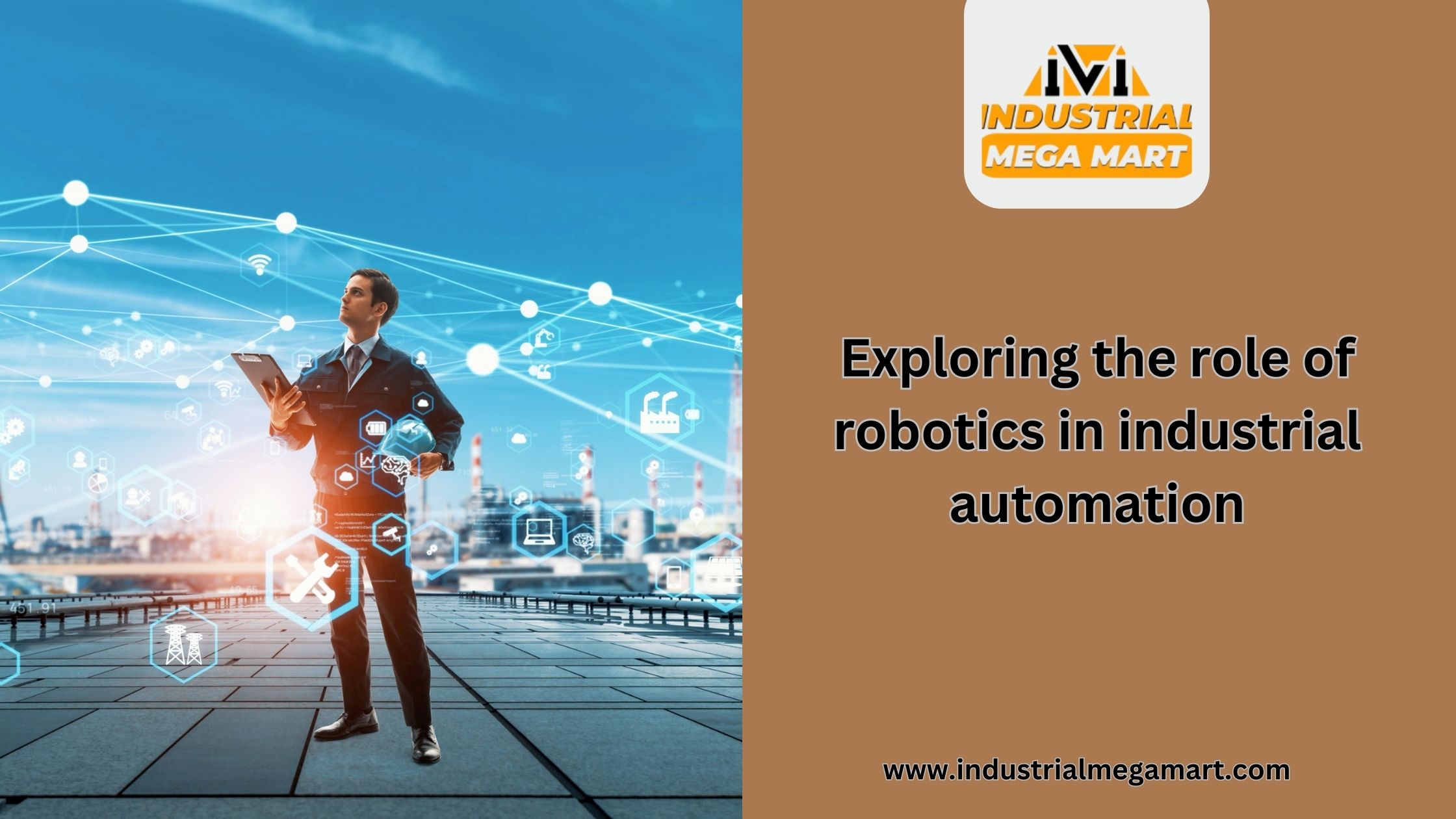 Zapier Automation – Automate Publishing. Free Your Time!
Zapier Automation – Automate Publishing. Free Your Time!
Exploring the Role of Robotics in Industrial Automation
Written by Hardik Pandey » Updated on: December 10th, 2024
Industrial automation is steadily changing how industries work; it provides unique accuracy and productivity. The key technology in this kind of change is robotics, which replaces specific tasks and minimizes the need for human interaction. From this perspective, the introduction of robotics into industries not only increased productivity but also revolutionized the way human beings function the industries.
This article delves into how robotics is shaping the future of industrial automation while highlighting its impact on tools and equipment as well as industrial hardware supply.
The Evolution of Robotics in Industrial Settings
Robotics was first introduced to industrial factories for simple parts such as handling of material and assembly. Today, robotics comprise the oral abilities like machine learning, artificial intelligence and operations with the use of sensors. Such developments have broadened their utility to a variety of sectors ranging from automotive, electronics, manufacture of pharmaceutical products to farming.
The current generation of robots can undertake repetitive operations that can be difficult for human beings to do with equal accuracy and quality and these include micro parts assembly, handling of hazardous substances, or working under conditions that are physically difficult for a human being .

Why Robotics Matters in Industrial Automation
The integration of robotics offers several advantages that enhance industrial automation systems:
Enhanced Efficiency and Productivity: Robots can operate 24/7 without fatigue, significantly increasing production rates and meeting tight deadlines.
Improved Safety: Deploying robots in hazardous environments ensures worker safety, as they handle dangerous materials or operate in high-temperature zones.
Cost Savings: Although the initial investment in robotics can be substantial, long-term savings from reduced labor costs and increased efficiency make it worthwhile.
Precision and Quality: Robots ensure consistent quality in production, minimizing errors and wastage.
These benefits make robotics indispensable in modern industrial setups, with businesses across sectors investing heavily in this technology.
The Impact on Tools and Equipment
As robotics becomes more integrated into industrial automation, the demand for advanced tools and equipment has grown. Robots rely on specialized tools to perform tasks like welding, cutting, assembling, and material handling. These tools are designed to complement robotic systems, offering compatibility, precision, and durability.
For instance, robotic welding systems require advanced welding torches and control units to ensure precision. Similarly, automated assembly robots rely on customized grippers and fixtures to handle parts effectively. The synergy between robotics and tools has not only elevated manufacturing standards but also spurred innovation in industrial hardware supply.
The Role of Industrial Hardware Supply
The use of robotics has reached across the industry to really change the supply of industrial hardware. Today, manufacturers expect special parts and elements including sensors, actuators, and controllers to enable robotic systems. This has in return created an environment of suppliers that narrowed down to specialized hardware for automation.
Industrial hardware suppliers are very important to avoid having machines that cannot interact or are not compatible with robotic systems by providing a stock of legit components that will fit in a firm's needs. This makes it easy to incorporate the robots in manufacturing operations, minimized disruption of operations, and high efficiency provided by the robots.
Key Applications of Robotics in Industrial Automation
Robotics has found applications in various industries, revolutionizing processes and improving outcomes. Some notable applications include:
Material Handling: Robots are used to transport raw materials, finished goods, and components within factories, reducing manual effort and improving efficiency.
Assembly Lines: Robotic arms perform intricate assembly tasks with speed and precision, ensuring consistent quality in mass production.
Quality Control: Vision-guided robots inspect products for defects, ensuring that only high-quality items reach the market.
Packaging and Palletizing: Robots automate the packing and stacking process, optimizing space and minimizing handling time.
Maintenance Tasks: Robots equipped with diagnostic tools identify and fix issues in industrial machinery, reducing downtime and maintenance costs.
Challenges in Implementing Robotics
Despite its numerous advantages, adopting robotics in industrial automation poses certain challenges:
High Initial Investment: The cost of acquiring and installing robotic systems can be prohibitive for small and medium enterprises.
Complex Integration: Ensuring that robots work seamlessly with existing tools and equipment requires significant expertise and planning.
Workforce Adaptation: The shift to robotics necessitates reskilling workers to operate and maintain automated systems.
Overcoming these challenges requires strategic planning, collaboration with industrial hardware suppliers, and investment in employee training.
The Future of Robotics in Industrial Automation
Today, with the technology getting more sophisticated, robotics in industrial automation is definitely set to further penetrate into the market. Such advances as cobots, artificial intelligence, and IoT will be viewed as new generation technologies that reshape the industries. These advancement will in turn improve the efficiency and effectiveness of tools and equipment to prop up higher effectiveness.
The use of robotics will also lead to creation of sustainable manufacturing processes as a result. On the efficiency aspect, robots can cut down on the utilization of resources hence can factor the sustainability initiative going round the globe.
Conclusion
Robotics has emerged as a cornerstone of industrial automation, transforming industries and setting new benchmarks for efficiency, safety equipment, and quality. Its impact on tools and equipment as well as industrial hardware supply underscores its significance in modern industrial processes.
Therefore, as this technology unfolds, it has become paramount for organizations to incorporate this into their undertakings to cut through the market intricacies of the increasingly automated systems. Hence, through exploiting the values of robotics, industries are capable of reaching high levels of growth and sustainability in the coming years.
Company Name — Industrial Mega Mart
Contact no — +91–9818376733
Email id — [email protected]
Address — 42/36. Site4 Sahibabad, Industrial Area Ghaziabad, Uttar Pradesh, India
Disclaimer: We do not promote, endorse, or advertise betting, gambling, casinos, or any related activities. Any engagement in such activities is at your own risk, and we hold no responsibility for any financial or personal losses incurred. Our platform is a publisher only and does not claim ownership of any content, links, or images unless explicitly stated. We do not create, verify, or guarantee the accuracy, legality, or originality of third-party content. Content may be contributed by guest authors or sponsored, and we assume no liability for its authenticity or any consequences arising from its use. If you believe any content or images infringe on your copyright, please contact us at [email protected] for immediate removal.
Copyright © 2019-2025 IndiBlogHub.com. All rights reserved. Hosted on DigitalOcean for fast, reliable performance.







